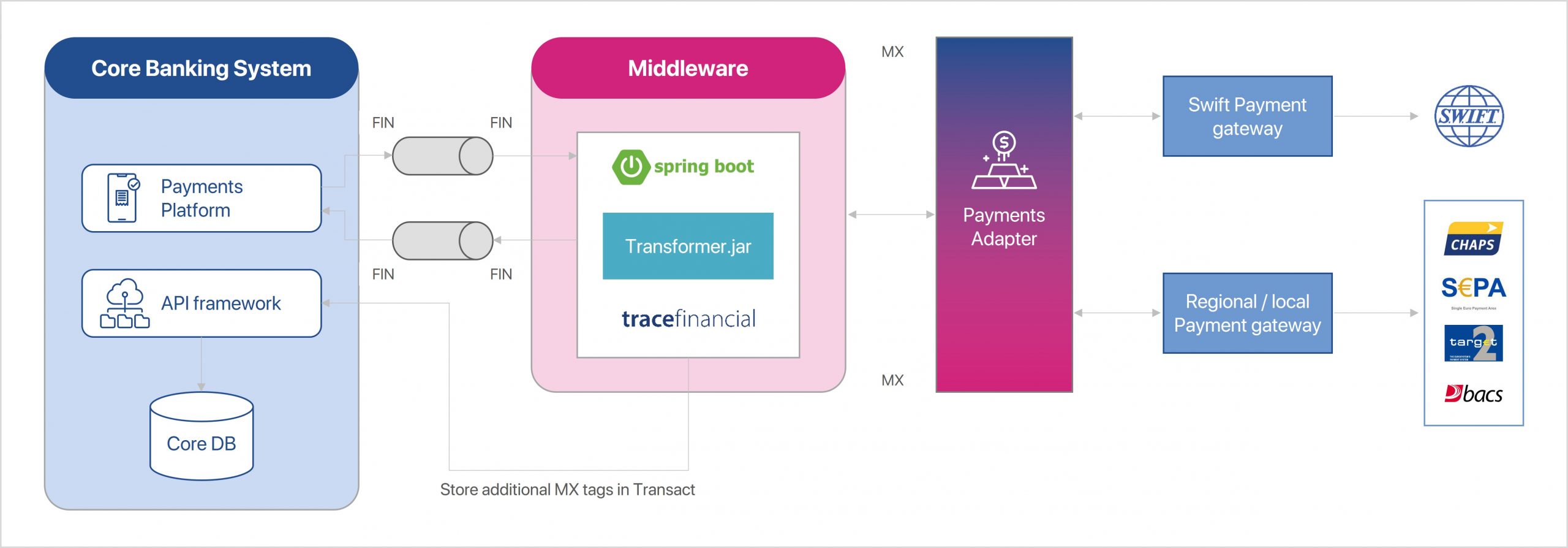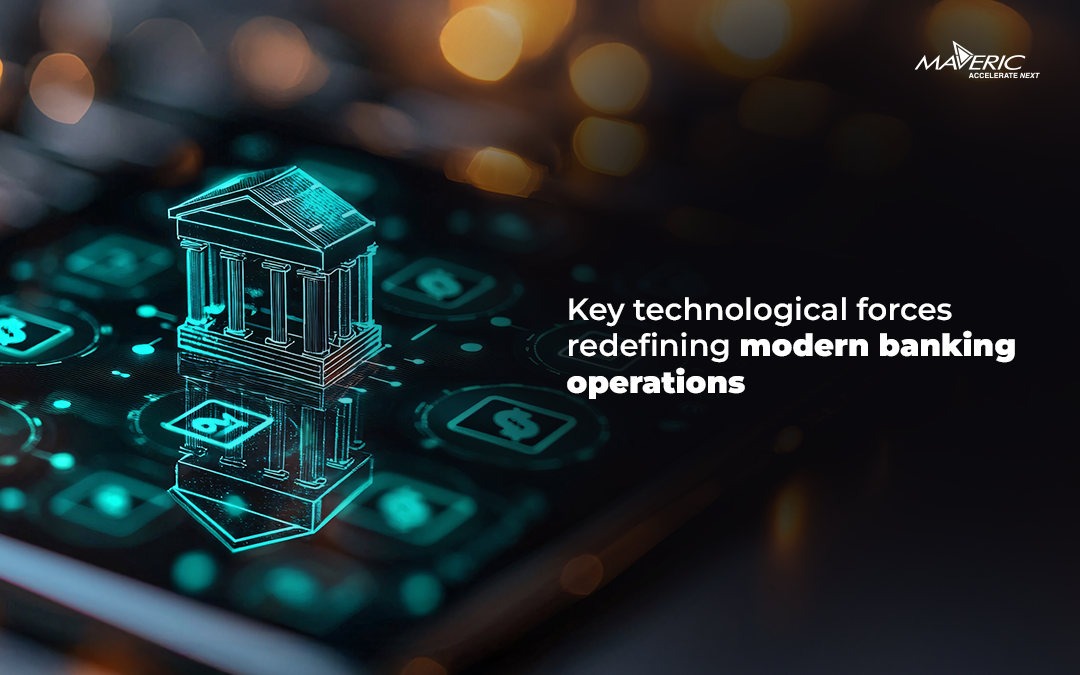The tipping point is here. The question of ISO20022 migration has moved from “if” to “when.”
Come 2025; ISO 20022 will become a default standard for high-value payment systems for 80 percent of transaction volumes and 87 percent of transaction value globally.
Adopted in more than 70 countries, this messaging standard (MX) has replaced MT or domestic proprietary formats. For the payments industry, valued at $2T in 2020, streamlining and syncing global banking transactions assumes criticality that can no longer be ignored.
Given the crucial nature of ISO20022 – the ISO standard for electronic data interchange between FIs – this article starts with the adoption benefits, expands on challenges banks face, their breakthrough options, and Maveric’s translation solution, along with its tenets and architecture.
Benefits of ISO 20022:
ISO 20022 is a standardized global language for financial messaging covering trade, cards, payments, securities, and FX.
Moving from the legacy SWIFT MT to highly structured, data-rich, open standards (ISO 20022 or MX) helps banks and financial institutions with the following benefits.
- Increased interoperability
- Supporting non-Latin alphabets
- XML-based approach that supports all payment types.
- Harmonizing formats that could not previously work with one another to now provide a richer, faster, and more efficient end-to-end payments experience.
- Ability to group messages based on data components from different payment methods enables more efficient management of:
- Nostro reconciliation
- Exception handling
- Reporting
- AML
What are the challenges that bank faces in implementing ISO 20022?
While the ISO20022 benefits are many, the complexities and interdependencies that the new standard introduces are formidable.
- Prominent and legacy tech providers must map their pre-ISO 20022 systems by reframing the proper rules for AML, fraud, and compliance.
- The exponential increase in data may require an infrastructure overhaul. ISO 20022 can multiply message lengths hundreds of times.
- Replacement of Legacy Architecture. Legacy systems that cannot process modern, complex, and diverse message standards may have to be phased out.
- Prohibitive time and costs. Upgrading a legacy system that handles new formats takes significant time and cost.
- Inadequate Legacy middleware. Existing middleware can handle only legacy FIN messages.
- Out-of-step Data Management. Banks must define new data models to handle ISO messages.
What implementation options do the banks have?
- Big bang migration. This form of an upgrade is a considerable cost and effort exercise, not to speak of the timeline challenges.
- Hybrid approach. This implies marrying migration and translation tasks as needed across different countries. While the localized system is purpose-built and quick to implement, the binary nature of the solution poses a maintainability challenge.
- Translation approach. Especially suited for like-to-like migration cases with low-to-moderate business volumes, this approach comes with a no-build effort and quick implementation.
Maveric recommends the Translation approach which will enable the banks to quickly become compliant. The intent is also to build a platform which will support future payments implementation roadmap of the banks.
Maveric Message Translation Solution
Maveric has created a solution based on the Translation approach for the core banking systems to accelerate the next in industry standards. This empowers Financial Institutions to achieve ISO 20022 compliance swiftly for both international and domestic payment schemes.
The solution is differentiated in the following ways.
- The entire implementation can be completed within 4 to 6 months depending on the number of payment types involved.
- The advantages of cost, efforts, and faster time-to-market notwithstanding, the Translation method (translating MX messages to MT format and vice-versa) is the least-disruptive approach.
- Banks can avoid a total overhaul, keep using internal legacy systems, and buy time for an informed next step, whether an MX implementation or an API implementation.
- The Message Translation Solution provides a transformation platform to enable banks to meet ISO 20022 compliance with low code and minimal effort.
Trace Financial Transformer has been selected as the translator tool of choice for building this solution. This platform is not only meant for payments but can also act as the non-ESB middleware for the banks at the enterprise level.
Message Translation solution architecture
This solution introduces a spring boot based middleware platform which integrates core banking systems to payment gateways. The translation of messages are handled in the middleware layer, there is no impact to core banking systems.

Workflow [as referenced in the above schematic]
- Payments platform produces MT messages.
- Messages are first queued and then consumed by the Spring boot camel application
- Camel route invokes Transformer jar.
- Transformer logic transforms messages to MX and routes to the payments adaptor.
- The transformer component handles reverse flow (MX to MT).
Fundamental tenets of the Message Translation Solution.
This solution covers all the below aspects:

Maveric’s critical offerings for Message Translation Solution:
- End-to-end strategic solution and architecture for handling ISO 20022 messages, using Transformer product.
- Implementation to store additional MX tags.
- Readily available detailed gap analysis between FIN & MX messages.
- Reconciliation of payment messages
- DevOps implementation for Translation solution.
- Automated test cases for payment messages validation
Why Trace Financial Transformer?
The Transformer tool comes from Trace financial, a market leader in financial message transformation and integration, supporting major global financial institutions, service providers, and application vendors across the globe.
Maveric has three primary reasons for choosing Transformer:
- One for all! Transformers are replacing antiquated middleware systems that worked fine for the important messages of their day. With their pre-built messaging libraries and easy import of JSON and XML schema definitions, transformers today support any message type.
- More power to the BAs and Developers! Even as message standards grow diverse and more complex, with their practical designer tools, Transformer solutions require no upfront programming experience to build and test rules.
- Transformation logic is no longer locked at the Technical layer! Powerful message libraries contain rules for a messaging standard. This offers a high level of validation. Additionally, automatic format conversions allow for effortless field mapping.
For the banks, the benefits are quick and powerful.
In the ISO200022 Transformer approach, banks needn’t configure, create, or manage the frequent change that powerful message libraries offer.
After all, building or altering message libraries is not a straightforward exercise and requires the deep expertise that Transformer allows.
Bringing it Together
Today a ripple, tomorrow a wave.
The ISO 20022 impacts sanctions, fraud, AML, core banking, and other systems far beyond payment. As the de-facto industry standard sets in, banks will store and exchange payment information in a structured manner. So, more than seeing ISO20022 migration from a ‘compliance lens,’ financial institutions should use the ‘innovation lens’ to generate business value through data.
Conclusion
In the face of ISO 20022 deadlines, large institutions find themselves at a fork. On the one hand, the modernization approach has explicit promises, and on the other hand, the cumbersome implementation varies by payment market infrastructure.
Maveric’s translation approach makes for a compelling option for banks to navigate from standard compliance through to payment modernization.
Please reach out to Maveric to achieve ISO20022 compliance.











